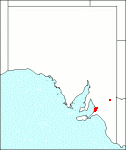|
Kickxia commutata
Citation:
Fritsch, Excursionsfl. Oesterr. 492 (1897) subsp. graeca (Bory & Chaub.)Ros. Fernandes, J. Linn. Soc.(Bot.) 64:74 (1971).
Synonymy: Linaria commutata Bernh. ex Reichb., Fl. Germ. Excurs. 373 (1831 or 1832) (as to species epithet); Antirrhinum graecum Bory & Chaub., Expéd. Sci. Mor. 3, 2 Bot. 175:t. 21 (1832); L. graeca (Bory & Chaub.)Chav., Monogr. Antirrh. 108 (1838), partly; K. graeca (Bory & Chaub.)Pau, Trab. Mus. Nac. Ci. Nat., Ser. Bot. 14:29 (1918).
Common name: None
Description:
Eglandular-villous or -hispid procumbent perennial, with long slender widely spreading branches; leaves shortly petiolate, shortly acuminate, the basal ones broad-ovate to 2 cm long, denticulate, the distal ones ovate-hastate to ovate-sagittate, often as small as 3-8 mm long.
Pedicels spreading, abruptly bent at the apex, filiform, 0.8-3 cm long, 1.5-10 times the length of the subtending leaf, 2-10 time the length of the flowering calyx, glabrous; calyx 2-6 mm long, the segments narrow-ovate, acuminate, fused at the base; corolla 5-8 mm long along the upper side, blue, violet or lilac, rarely white, except for the palate which is white spotted with purple, with the spur 7-8 mm long, slender, tapering, greatly curved.
Capsule globular, 2-2.5 mm diam. (to 4 mm in Europe), brown-yellow, thick-walled, eglandular-pubescent, glabrescent; seeds ellipsoid, 0.7-1 mm long, darkish-brown, densely coarsely tuberculate.
|
|
Distribution:
|
In gardens and disturbed areas.
N.S.W.; ?Vic. Native to the Mediterranean.
|
Conservation status:
naturalised
Flowering time: Oct. — June, but possibly all year.
|

SA Distribution Map based
on current data relating to
specimens held in the
State Herbarium of South Australia
|
Biology:
The subspecies commutata is also naturalised in Vic. It has shorter stouter branches than the above subspecies, leaves rather broad and ovate-hastate, and larger pedicels rarely more than twice the length of the subtending leaf.
Author:
Not yet available
|

